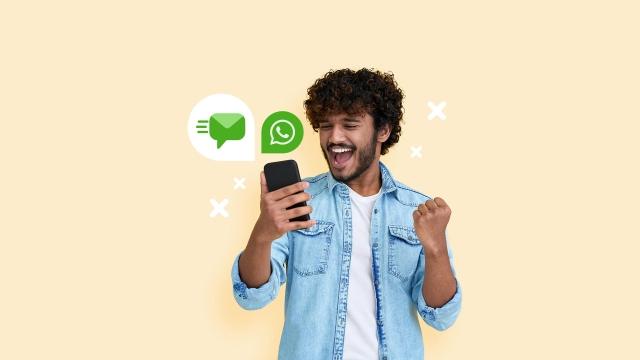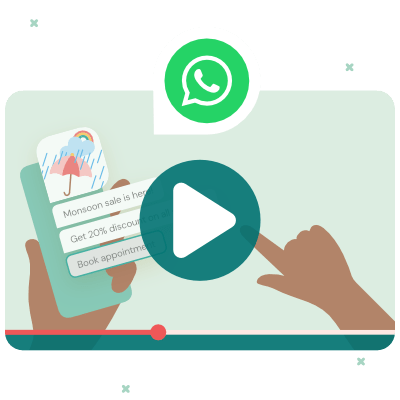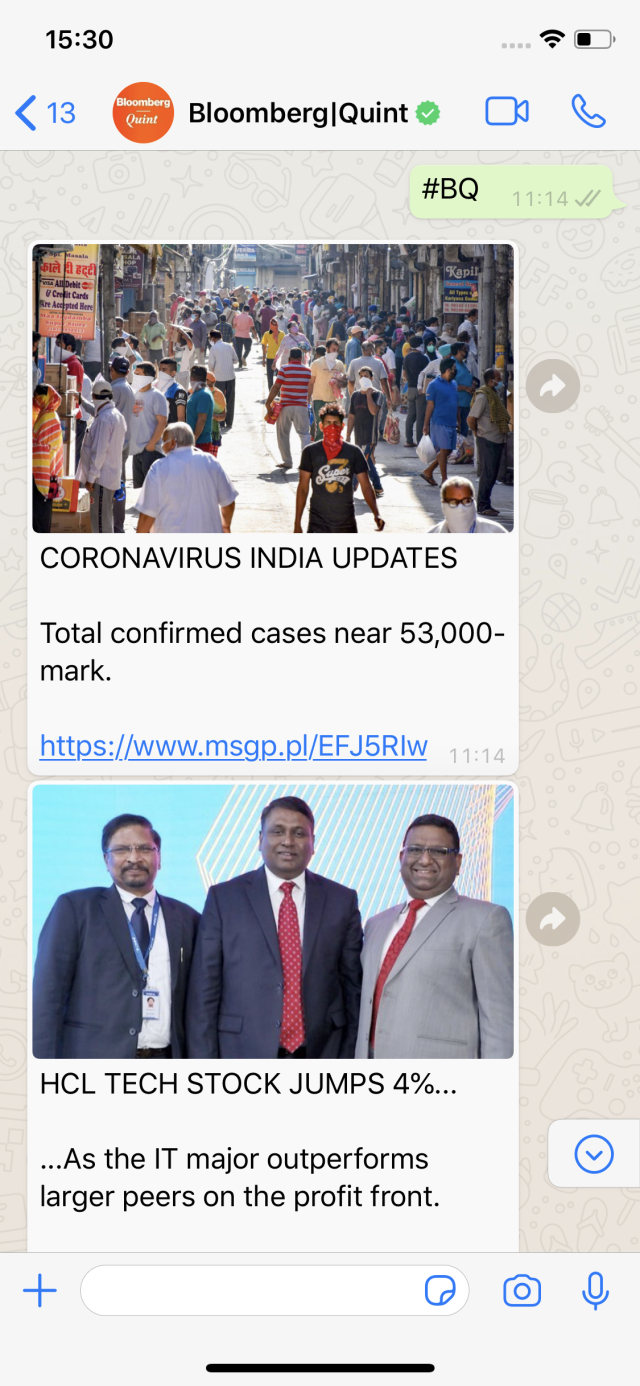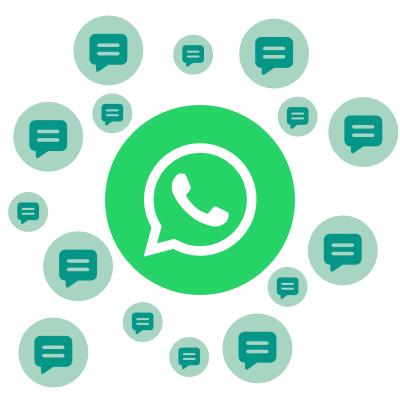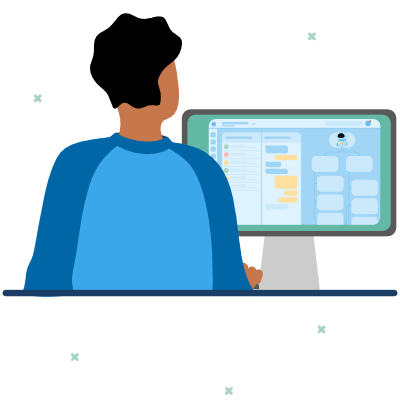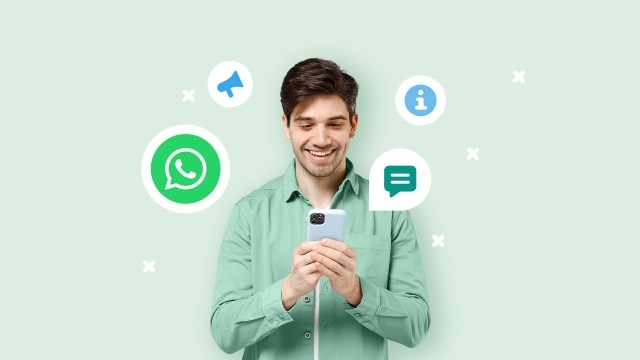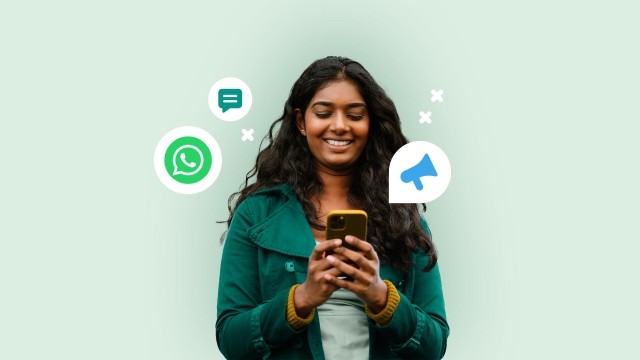In this article:
What's the WhatsApp broadcast, how can you set up a broadcast list, and what are the best options for businesses (without being blocked)? We'll show you how the feature works, and guide you through different methods.
From a business perspective, the WhatsApp broadcast is one of the most interesting communication features. It allows you to send bulk messages to multiple users at once, and — given the popularity of WhatsApp — reach a huge audience.
It also delivers much better key performance metrics than other broadcasting tools, like social media posts or e-mail newsletters.
- The open rate for WhatsApp messages is 5%.
- The click-through rate is around 35% (social media reaches 5%, e-mail CTRs typically hover around 3%).
- You get a user's full attention with your message being on their lock screen (no spam folders, no distracting algorithms).
Given these metrics, the WhatsApp broadcast is particularly interesting for marketing campaigns.
What's the WhatsApp broadcast?
The WhatsApp broadcast is a one-to-many messaging feature on WhatsApp. With one single message, you can therefore reach many users at once.
Unlike WhatsApp groups, where all members see all the messages and responses, messages that you send through a broadcast list, end up in the recipients' private chats. And if they answer you, the conversation stays between the two of you, and isn't public, like in the group.
In order to send out a WhatsApp broadcast, you need to set up a broadcast list. This can be done on the WhatsApp Business App and the WhatsApp Business API, as the private WhatsApp is off limits for business use!
However, the Business App has very limited functionalities, which is why the API is the better option for most businesses.
Sending WhatsApp broadcasts on the WhatsApp Business App: step-by-step
Creating broadcast lists on Android devices
- In your WhatsApp Business App, go to the three dots in the menu.
- Now, choose "more options".
- Select the option "new broadcast".
- Here, you can either search for contacts or add them manually to your broadcast list.
- Once you selected all contacts, tab on the check mark to finalize your broadcast list.
Creating broadcast lists on iOS devices
- In the Business App, go to "chats".
- Go to the "broadcast lists", and then select "new list".
- Now, you can insert contacts through the search feature or manually.
- Tap "set up" to finalize your list.
Editing the broadcast list
You can give your broadcast list a name and add an image. There are also some editing options. For example, you can change the name of the list, change the contacts in your list, or delete the list. However, you can't change the profile image.
In fact, that's not the only limitation on the Business App.
Limitations of the Business App
If you really want to use WhatsApp to scale marketing campaigns, you'll soon discover the limitations of the Business App.
First of all, you can only send messages to people that have your number saved in their contacts. That's a HUGE limitation for reaching out to new audiences.
In addition, there's a maximum of 256 unique recipients per broadcast list. That's not a lot if you're serious about scaling your campaigns. And make no mistake, if you try to send out messages to more users, WhatsApp will block your account.
You also don't have access to WhatsApp templates on the Business App. So you can't automate or schedule messages, but have to type them from scratch every single time. Chatbots are also not possible on the Business App. That can actually be very helpful when users respond to your broadcast messages. Then, you can have a chatbot automatically take over, and not only give an immediate response, but also collect valuable information.
Finally, there's also no way to connect a CRM system, which makes personalizing campaigns on the Business App very complicated. And you won't be able to get the green tick, as that's an exclusive feature of the API.
That's why companies that really want to get the most out of the WhatsApp broadcast tool for their marketing switch to the WhatsApp Business API.
💡 6 reasons to switch to the WhatsApp Business API
Sending WhatsApp broadcasts on the WhatsApp Business API
The broadcast feature on the WhatsApp Business API (official name: WhatsApp Business Platform) is for companies that have more than five employees and really want to use WhatsApp professionally. That's why the API offers a lot more options and fewer limitations when it comes to marketing messages.
On the API, setting up a broadcast list works through the Meta Business Manager. Here, you have to select a template for messaging customers. WhatsApp offers four types of templates: utilities, authentication, service, and marketing.

The marketing template essentially corresponds to the broadcast feature. However, with the API, you can reach users that don't have your phone numbers saved in their contacts. And you start off with a minimum of 1,000 recipients. Depending on the success of your campaign, you can scale this to 10,000, 100,000, or an unlimited number of recipients.
The templates can be saved, edited, and scheduled, which allows for a lot more automation and easier planning of your campaigns. You can also add chatbots and integrate CRM systems to automate responses, and more personalized campaigns.
You also have the option to set up very specific target groups (based on age, previous purchases, etc.), which obviously can optimize your conversions.
Overall, only the API gives you access to broadcasting features that'll make your campaigns successful and scalable.
Important: Sending messages through the API isn't free of cost. The pricing depends on the type of message and the recipient's country code.
💡Read our guide to WhatsApp's Business pricing
How do you get access to the WhatsApp API?
In order to use the marketing templates through the WhatsApp Business API, you need to get access to the API. There are four options:
- Set up your own IT infrastructure internally (essentially, you need to code your own software around the API). If you're looking at using other messaging apps like Telegram or Facebook Messenger, we recommend a unified API solution.
- Use the Meta cloud. You'll still need IT resources, but are more limited in customizations than setting up your own infrastructure.
- Use a ready-to-go messaging solution from an official Business Solution Provider like Sinch Engage.
Sinch Engage is an official Meta partner and authorized to offer messaging solutions to businesses for WhatsApp, Facebook Messenger, and Instagram Direct Messenger.
In addition, we also developed functionalities that you won't find on the Meta cloud, like an easy-to-build drag-and-drop chatbot, analytics tools for your campaigns, and we even have a GPT integration that'll help you set up broadcast messages faster.
With our solution, you don't need to set up anything. We actually help you set up your account, and then you can start your campaigns immediately.
How to send WhatsApp broadcasts with Sinch Engage
On Sinch Engage, you manage all your conversations on one interface and through one central inbox, no matter what messaging app they came from originally. We actually also support messaging apps outside the Meta family, such as Telegram or iMessage. In addition, you manage all of this from your desktop computer, which is in a sense like a convenient WhatsApp Broadcast web version.
There's two ways to start a new WhatsApp broadcast on Sinch Engage. You can either create a new template, or use an already existing template.
Create a campaign with a new WhatsApp template
To create a WhatsApp message template:
Go to Settings > Account > WhatsApp message templates. Here, you'll see the template list, where you can manage all of the templates in the project.
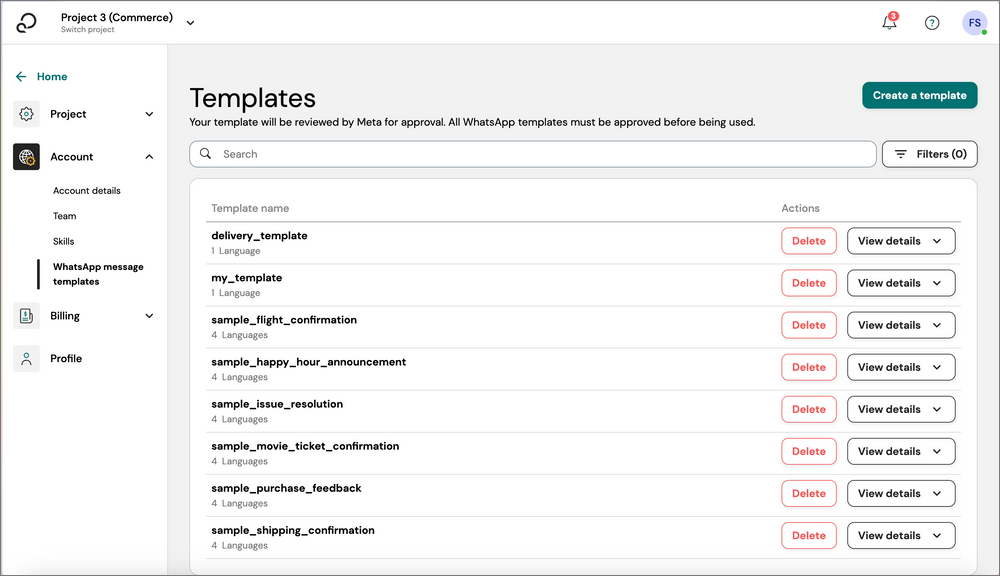
To start creating a new template, click the Create a template button, and then the Select pre-made template view opens. If you want to create a template from scratch, select the first template, which is empty. There's also the option to use one of our pre-made templates.
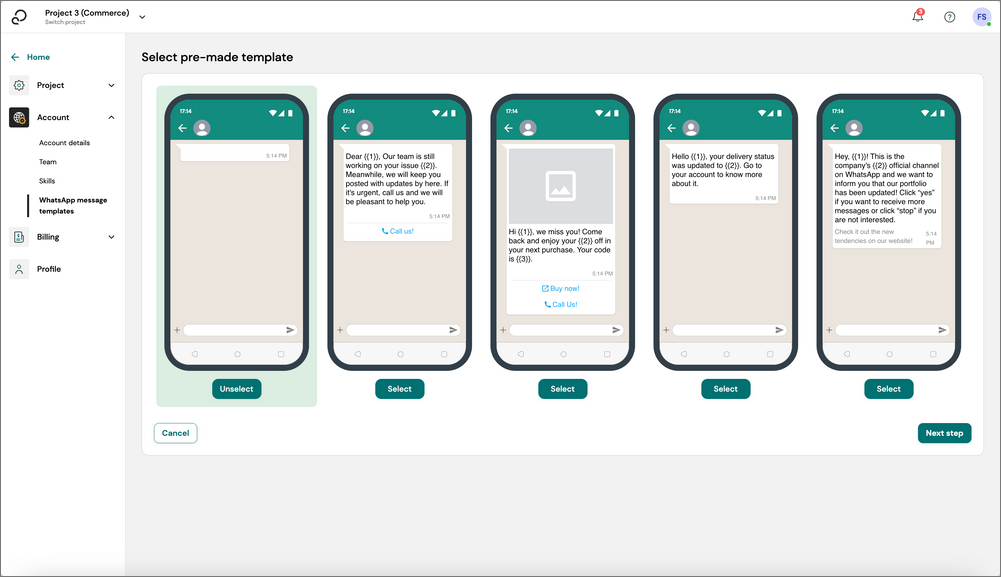
Click Next step to open the Template configuration view, and fill in the information regarding the template.
- Template name: The name can contain alphanumeric characters (a-z in lowercase only, 0-9) and underscores (_). Spaces aren't allowed.
- Template category: Select the category to which your template belongs. Marketing, Utility or Authentication.
- Template language: Select the languages of your template. You can select more than one.
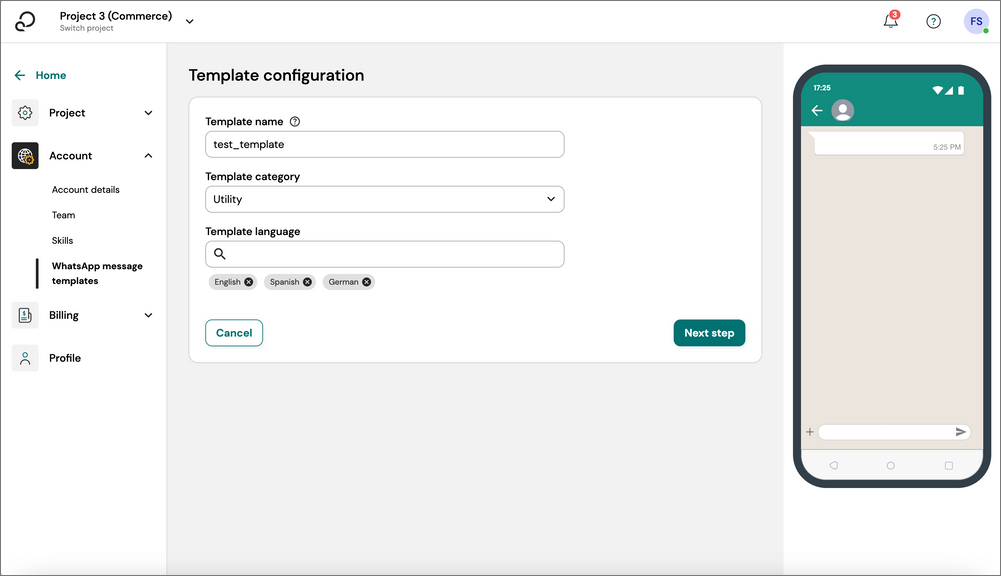
Click Next step. In the Text field that appears, write the body text for the message template. The maximum length of the text is 1024 characters. 🤖 You can also use our GPT integration here, and get some AI inspiration for your copy.
You can also add variables, which are placeholders that users replace with customer-specific data when sending a message using this template. For example, you can use a variable like {{name}} which then will fill out the recipient's name from your database for more personalized campaigns.
If you want, you can also add:
- A header that can contain text or multimedia content
The header is also a placeholder where you can insert an image, video or document when you send a message using this template, similar to the variables in the text. In the Type field, select the type of the header:
- Text: Enter the header text. The maximum length is 60 characters. You can also use one variable in a text header.
- Image, Video, or Document: Upload the file you want to use as the placeholder (images as PNG or JPG, video as MP4, documents as PDF). Users can replace this image, video, or document when sending a message using this template.
- None: No header is used in your template.
- A footer that contains additional information in text. The maximum length of the footer text is 60 characters.
- Two types of buttons:
- Quick Reply: This allows the user to easily send a text message by clicking a button, such as “Yes”, “No”, or “Maybe”. You can add a maximum of three buttons. They can only contain text (numbers and letters), a maximum of 25 characters in each button.
- Call To Action: This type of button contains a URL or a phone number and opens a website or the user's telephone app for calling when they click on the button. You can use both static and dynamic URLs. A dynamic URL contains a variable and can therefore refer to different menu items within a website. The user must fill in this variable when sending the campaign. You can add a maximum of two buttons of different types.
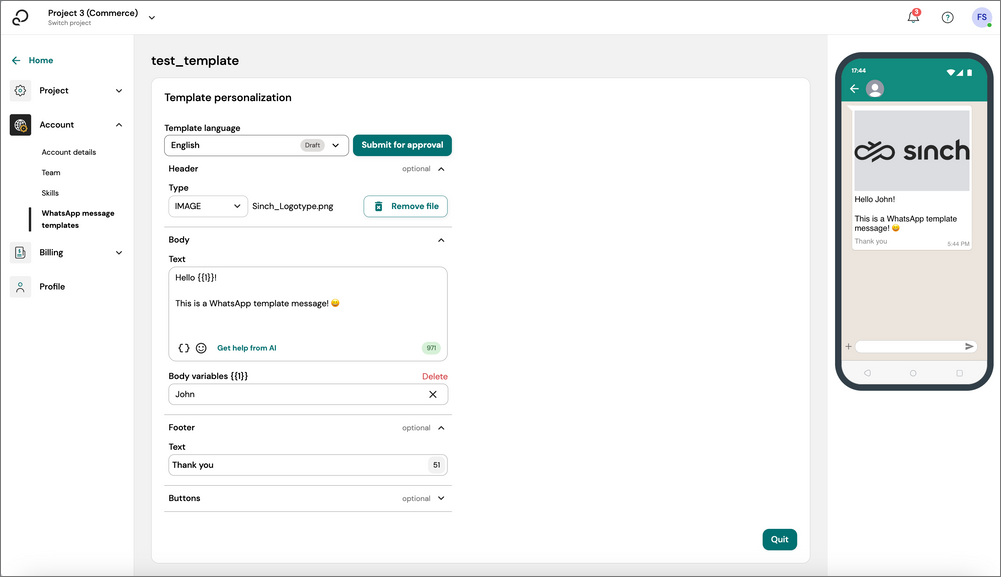
To finish creating your template, you can either first save it as a draft and continue working on it later or submit it for Meta's approval right away.
To submit the template to Meta for approval (required!), click the Submit for approval button. Note that you can't edit the template after you submit it for approval, and you need to submit each language individually. After Meta has reviewed and approved your template, its status changes to Approved and you can start using the template.
You can see the current status of the template in the WhatsApp message template list in Sinch Engage as well by clicking View details to expand the details of each template:
- Reviewed and approved by Meta
- Waiting for Meta's review
- Rejected by Meta
- Saved as draft and not yet sent to Meta for review
Create a new campaign with an existing WhatsApp template
To create a campaign from existing templates:
Go to Campaigns > All campaigns, and click the Create button. If it's the first time you're creating a campaign the Start a campaign button will appear for you and the Create a new campaign view opens.

In the Setup step, do the following:
- Give your campaign a name.
- Define your audience by either selecting from an existing audience list or importing your contacts from a CSV file.
- Select one channel to target your audience.
- Click Next button. The Design your message view opens.
- In the Message step, do the following:
- Select Use existing template
- Continue by selecting an existing template and language, or Create a template.
- A Body text area will be pre-filled with the selected template's approved message.
- To personalize this message to your customers, replace all Body variables with customer properties from your selected audience or with the columns from your CSV file imported.
- If the selected template has a media, you need to upload one clicking on Add files button
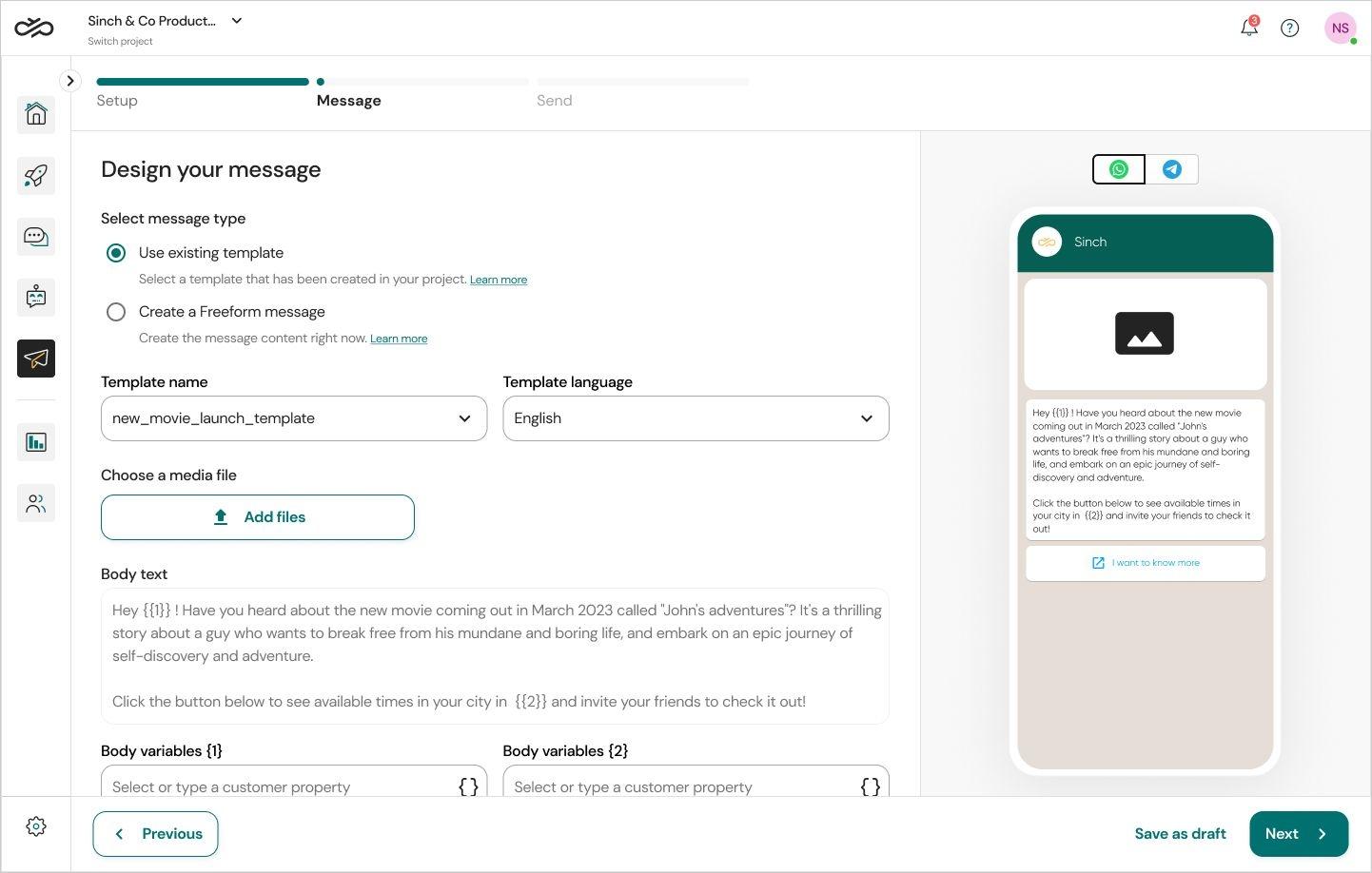
- Review your message from the previewer.
- Click Next button to open the review your campaign before sending view.
You can now either schedule or send your campaign.
Tracking your WhatsApp broadcasts with Sinch Engage
After you launched a campaign, you get real insights through our advanced analytics tools, such as tracking how many unique users per channels you reached, how many chatbot replies were in play, and much more. Plus, you can also set up your own charts to track metrics you're interested in.
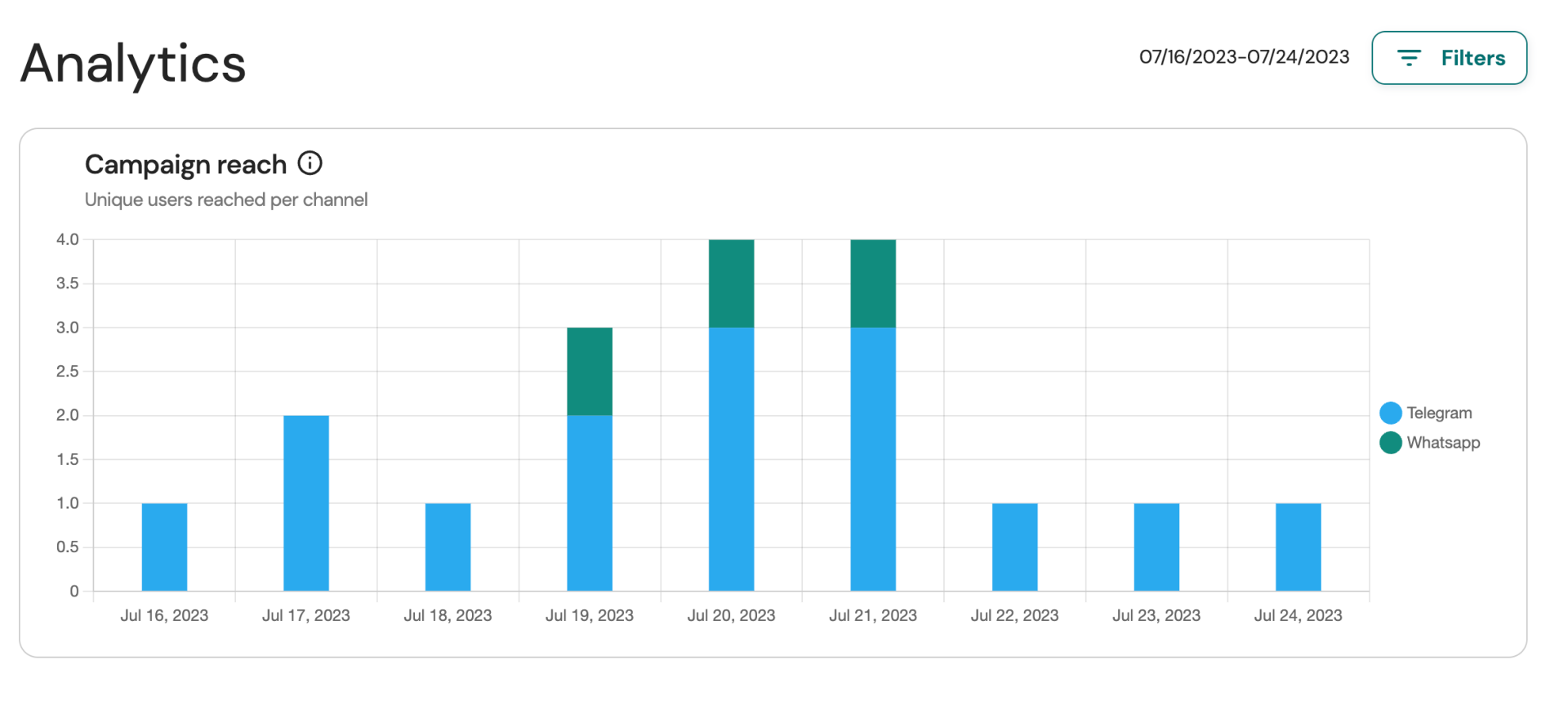
Overall, with Sinch Engage, setting up WhatsApp broadcasts is quick, easy, and you get access to many functionalities that you wouldn't have with the WhatsApp Business API, which can make your campaigns even more successful.
